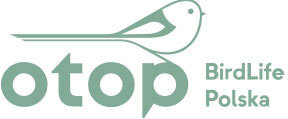Summit meeting to protect one of the World’s rarest songbird
New colour-ringing scheme for the Aquatic Warbler in operation
1 sierpnia 2006Summit meeting to protect one of the World’s rarest songbird – 1st meeting of the Range States of the Aquatic Warbler Memorandum of Understanding
Nations from across Europe and Africa have come together this week in the Lower Oder Valley National Park near Berlin in Germany, under the auspices of a United Nations Memorandum of Understanding, to discuss the future of mainland Europe’s rarest songbird, the aquatic warbler.
The current world breeding population of the aquatic warbler has plummeted, since the beginning of the last century, by 95 per cent to only 16,000 males in just seven countries, making this robin-sized bird rarer than the African elephant. In the mid 1990s, it was believed the aquatic warbler could face extinction within the next decade.
The aquatic warbler nests in the fen mires and wet meadows of eastern central Europe and migrates more than 5000 kilometres to Africa for the winter. Representatives from 13 countries, where the bird either nests, migrates through or winters, discussed the bird’s future at a meeting convened by the Convention on Migratory Species (CMS).
Robert Hepworth, Executive Secretary of CMS, said: “The aquatic warbler is the only songbird of mainland Europe which is facing global extinction. Bringing together scientists and government decision makers from the species’ range states in Europe and Africa, and coordinating their work is essential to ensure its survival.”
Faced with the bird’s imminent extinction, BirdLife International championed this species’ cause since the mid 90ies, when BirdLife expeditions to under-explored parts of Belarus discovered the three key breeding sites for the species, which together hold 60 per cent of the world population.
John O’Sullivan, of BirdLife International, explained: “Alarmingly, all three sites were acutely threatened with deterioration and destruction. But a project to restore these sites, with funding from the UK government and the German Michael Otto Foundation, has now saved these sites and ensures good breeding success for this vulnerable bird.”
The meeting concluded, that the main success of the joint efforts of governments, BirdLife International and CMS over the past years is the stabilization of the core breeding population of the species in its largest breeding sites, while the loss of smaller breeding sites and especially the critical decline of the species’ distinct population in Pomerania along the German-Polish border is highly alarming.
Work now needs to intensify in key countries of West Africa, like Senegal, to find the elusive wintering sites of the species, as this would be critical for the effective protection of the aquatic warbler throughout its range.
Robert Hepworth, of CMS, added: “This bird could have a bright future in Europe and Africa if the right decisions are taken to conserve it. The CMS Memorandum will provide the basis for governments, other organisations such as BirdLife International, and scientists to work together to save the aquatic warbler and its unique habitats.”

